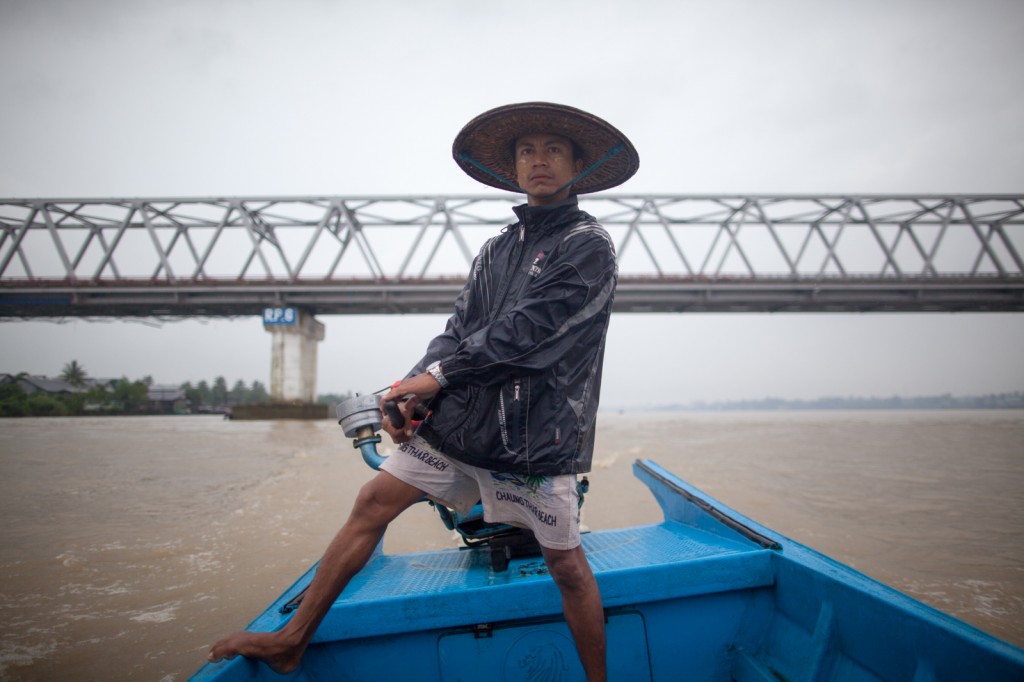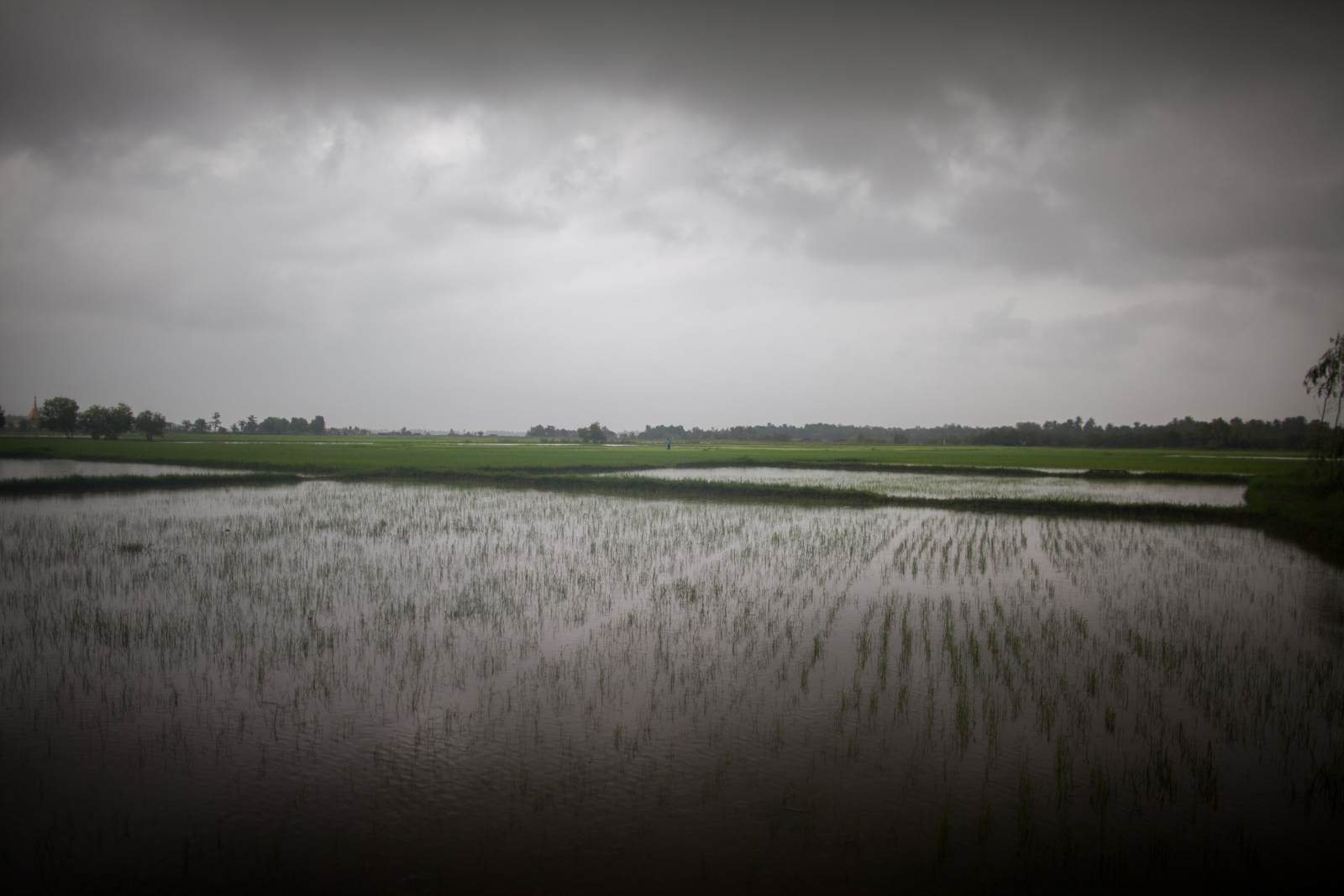It takes an hour to clear the Yangon traffic, and another two to reach Bogale, a small town at the edge of the Irrawaddy Delta. From there, depending on which village you are planning to visit, the captain requires up to three hours of skilful boatmanship to navigate the monsoon swollen tributaries before reaching landfall.
For our team field-testing a new financial service for poor farmers, it makes for a long working day (western looking foreigners are not allowed to stay overnight in the villages, and we’re a hybrid local and foreign crew so we need to return to a registered guesthouse in Bogale at the end of the day). I’m in the country to wrap up the project and scout what’s next.
I’ve been tracking life at the edge of the grid for more than a decade and although the challenges of connecting people sound the same, every trip offers up a new angle on what connectivity means to the locals: its impact on gender roles in India; the rise of love-marriages in Afghanistan; a more level playing field for favela dwellers in Brazil; a stable point of contact in Nigeria; the list goes on. Here in the delta some villages have a slither of cellular connectivity (rarely data), but many do not. Ask any of the farmers which person in the village has a mobile phone, and they’ll reel off the exact names: the novelty of ownership and shared use of devices is prevalent so it makes sense to maintain a spatial awareness of who has what. My hunch is that when device ownership hits 40 people in a village of 1,000, the need to track who has what becomes less important, it takes on an air of ubiquity.
In Bogale 2,500 Kyats ($2.5) will buy you a rechargeable battery that can power a home for two short nights. 40,000 Kyats ($40) will buy a new car battery, that can last for a month. In places with no or unstable electricity the spread mobile phones creates informal markets for power but it’s not cheap. “I won’t use my smartphone to watch videos if I know there is no electricity — it costs too much.” Ten dollars a month spent on power is out of the price range for a farmer earning $1.5 a day (yes solar is becoming more prevalent, but its not quite ready for this demographic). Here the cost of watching a movie on a smartphone, a use case that is prevalent elsewhere, is not measured by the cost of obtaining content but by the cost of replacing the power required to view that content.
Connectivity is not binary. The network is never neutral.
Two short flights from Yangon and you’re in Myitkyina, the capital of Kachin State. Despite this being an internal flight, an immigration official symbolically checks my passport on arrival. This is a restive region with years of fighting between the local Kachin Independence Army (KIA) and the Burmese army, although a ceasefire is expected soon.
The town sits at a cross-roads between India and China and lies well off the tourist trail. I’d originally planned to hire a driver and explore the road that runs between both countries but only a few places can be visited without a permit and many are off-limits. Extending the trip by a few days provides a chance to learn about a region our studio needs to better understand and to get back into the rhythm of writing. Myanmar has been universally friendly but there’s a slight edge on the streets as people size up the obvious foreigner in their midst. Smile, haircut and shave, play the tourist. Only at midnight does the heat subside to something manageable, and in a local bar an organist is entertaining Chinese businessmen on their third round of beers. They are most likely here for gold, teak or jade.
Conversations with local students echo what we’ve seen elsewhere in the country, high smartphone adoption (including many high-end devices) and significant peer to peer content sharing through Zapya. When you buy a new phone here it comes preloaded with whatever content you ask for, the only limit being the amount of memory you can afford. But there is still friction in the process. Most new, and therefore desirable content comes from VCD and DVDs (and tape cassettes!) and as one student put it “We don’t have internet at the university. We don’t even have computers”. Rip, burn, mix starts with a device that can play the media you want to rip from.
The cellular network was omnipresent in the town, but I didn’t managed to get a slither of data connectivity until the small hours. “The government restricts internet access here, it is a stronghold of the opposition.”
Connectivity is not binary. The network is never neutral.
Been reflecting on the goals of Internet.org after being on a panel with Javier Olivan.
On the surface it’s aims are laudable Every one of us. Everywhere. Connected, it is set up to serve people such as the farmers and students I’ve met on this trip, those who will significantly benefit from basic connectivity. The sentiment of my peers, including conversations with some Facebook employees is that Internet.org’s intent is closer to Every one of us. Everywhere. Connected to Facebook. Feeding the Beast, a solution to a growth strategy that was hitting natural limits, and a flag in the distant sands for stock-vested troops to charge towards.
I’ve been here before. At Nokia the commercial success of entry products (low cost devices, that at a rough estimate accumulatively sold close to 1.5 billion units) was turned into a “connecting people” story, and my team’s research providing a human angle to that arc. I’ve seen what gets exaggerated and by whom, and where the real and underreported impact lies.
What will be the impact of Internet.org?
It’s early days, but Facebook’s new app provides “free” internet access to a range of services, and will have significant appeal in the countries where it can cut a deal with operators. “Free” is a compelling proposition in any country. “Free” is utterly compelling proposition in highly resource constrained communities. But that’s only part of the story.
At Studio D we talk about “next billion clients”, organisations that are targeting lower middle class to the base of the pyramid consumers in so-called emerging markets. Many clients are significantly over optimistic of the value of their products, a few (including a number in Silicon Valley, that had significant success in other areas) are downright naive to the design choices they should make. As a creative consultancy we can add value in the usual ways: research, design and strategy. However, the place where the most work is needed is how our clients frame their relationship to these consumers. There’s a long way to go. Sometimes the journey starts with a ride out into the delta.


